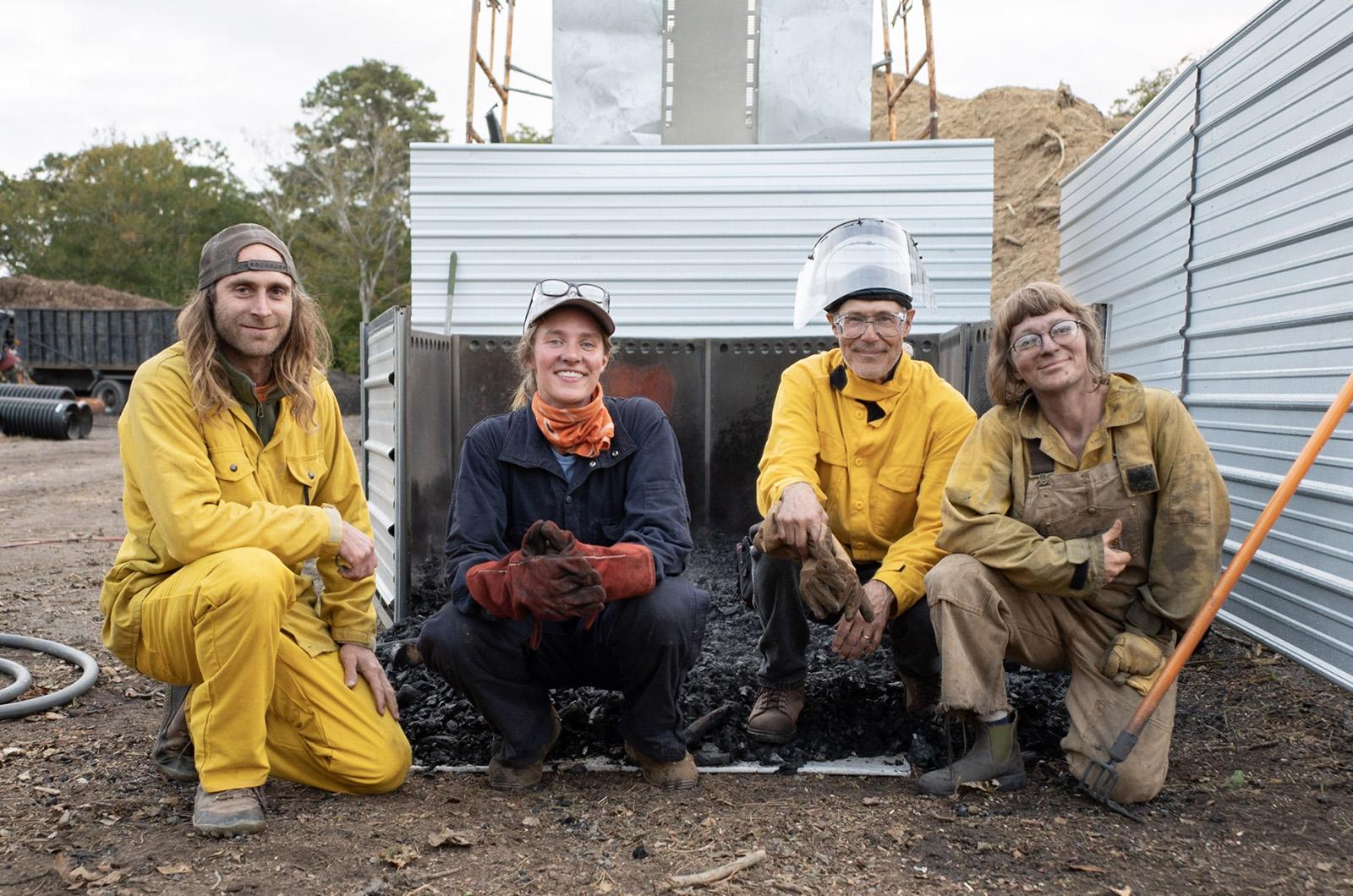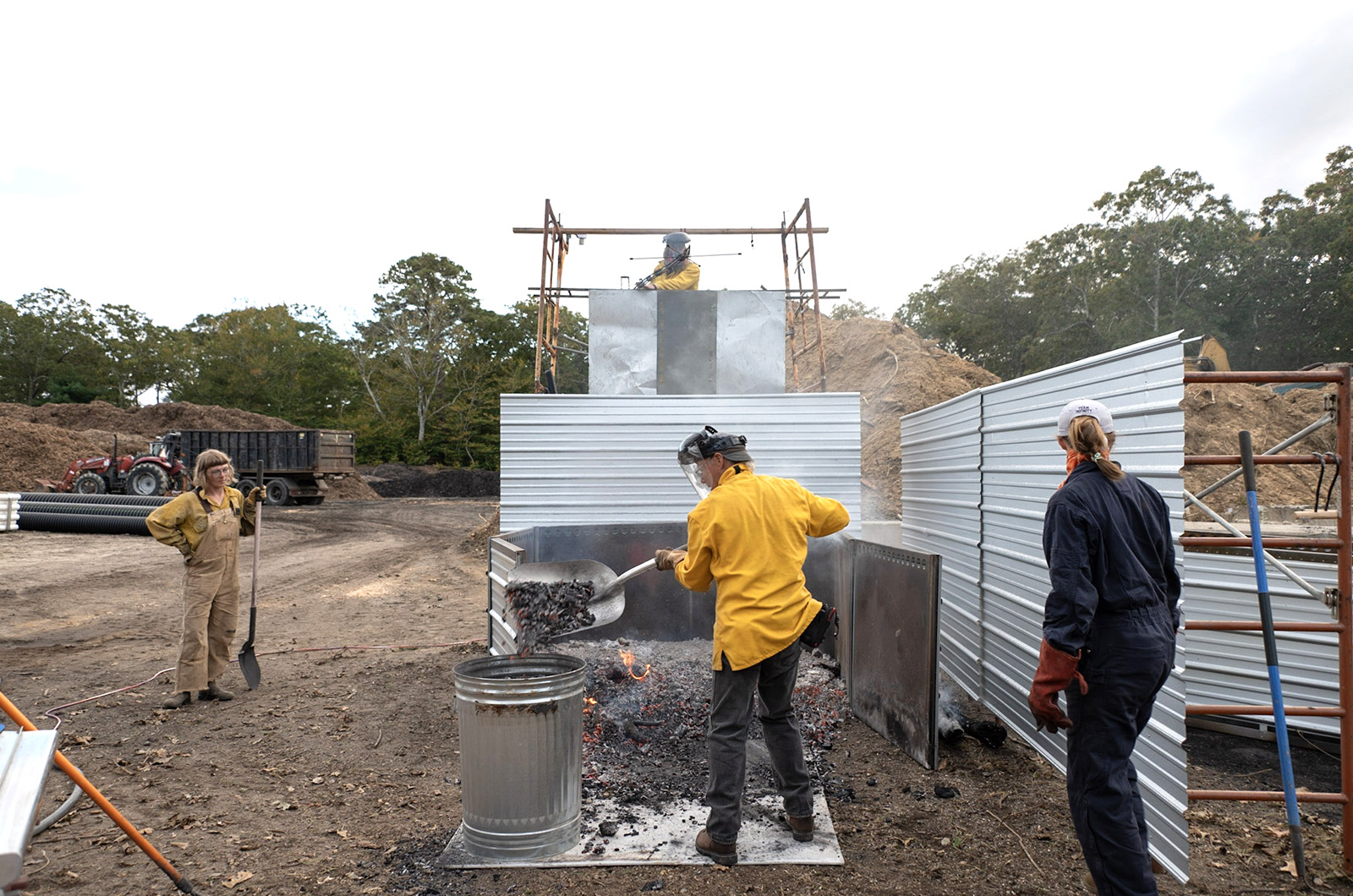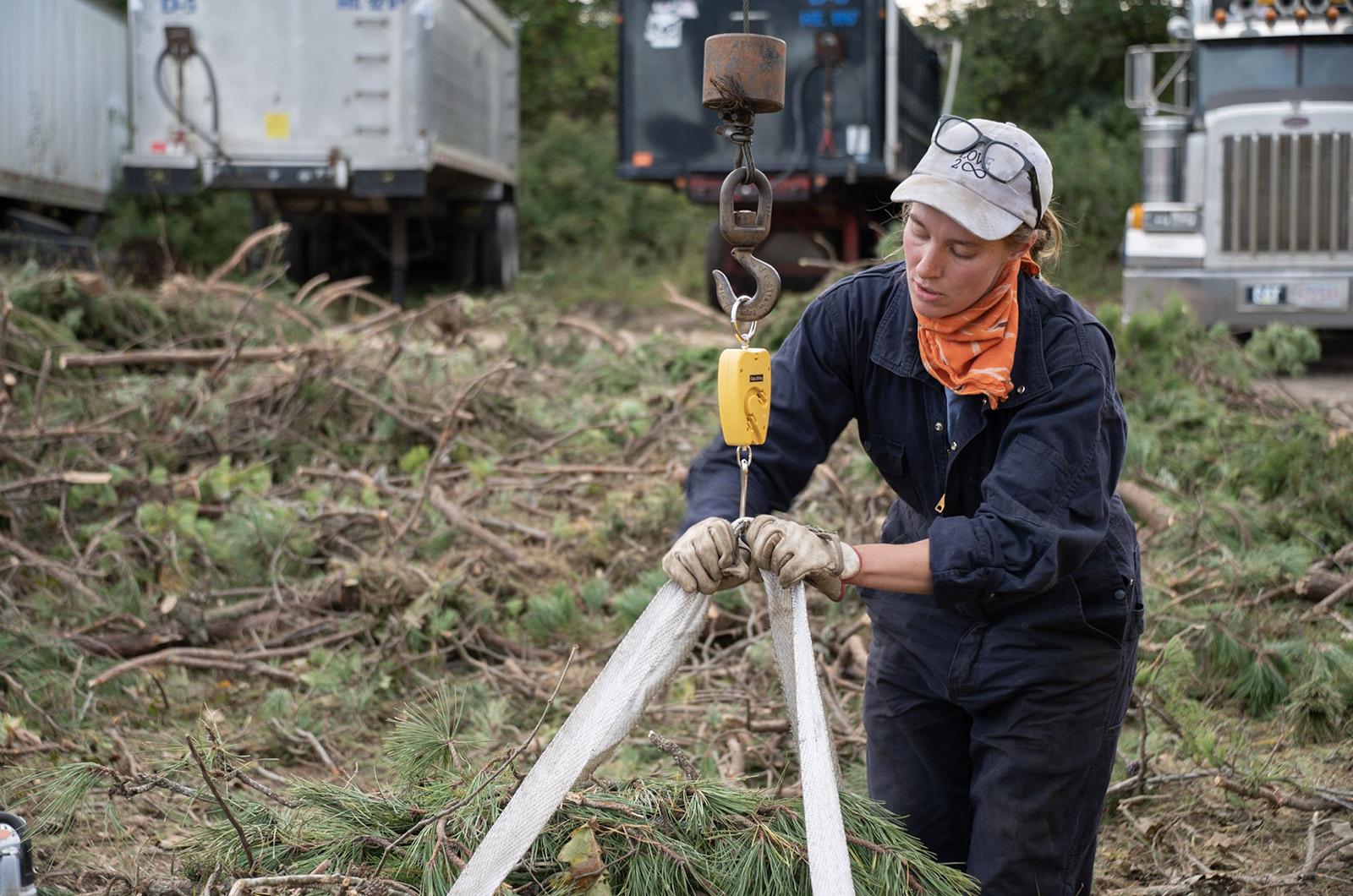Chainsaws revved at John Keene Excavation and the air smelled of campfire and resinous pine, as scientists and climate activists gathered recently for step one of a project aiming to reimagine Island waste and habitat management.
Dressed in thick yellow canvas, with a clear plastic face shield protecting wide oval glasses, forest biologist Ken Carloni tossed a scraggly pitch pine branch on the fire, burning within a sheet-metal hexagon.
“Once it gets really engaged, all you see is the shimmer, and it burns real clean,” said Mr. Carloni of the fire, which was burning in a “flame cap kiln” of his own design. Mr. Carloni has completed dozens of these burns over the past few years, mostly in the Pacific Northwest, geared toward promoting the production and use of one material: biochar.
A kind of bioactive charcoal, biochar is created by burning branches and other wood waste in a contained environment. It has a range of beneficial uses that include enriching the soil and reducing the risk of wildfire.
Now, with funding from a Vineyard Vision Fellowship, longtime summer resident Maggie Craig has taken a position as a biochar specialist with the Martha’s Vineyard Commission, bringing her biochar mentor Mr. Carloni with her to the Island to begin researching the process of making the material, and increasing awareness of it on-Island.
Over the course of the next year, Ms. Craig and her team will collect data on the level of emissions produced by flame cap burns compared to other methods, as well as investigating a number of applications of the material on Island.
“I thought the Island was the perfect place to make biochar,” Ms. Craig said. “It seems to be a pivotal missing link to the waste stream.”
Ms. Craig first encountered the biochar creation process as an outsider, writing on Mr. Carloni’s burn methods as a reporter for the Capital Press in Oregon in 2020.
Mr. Carloni was then working with the Yew Creek Land Alliance in Oregon, producing biochar with fuel from dense, invasive conifer growth threatening to choke out oak forest and increase the wildfire risk.
“That’s really how the flame cap kiln evolved out in Oregon, to deal with wildfire prone stands,” she said.
The process has its roots, Ms. Craig said, in the controlled forest burns done by Indigenous people across the continent, including on Martha’s Vineyard.
In making biochar, the fire is centralized at a kiln, where deadwood and branches are used as fuel and the resulting biochar is then spread throughout the forest as a soil amendment. This method limits the risks of completing a controlled burn and produces less carbon dioxide.
“It’s like bringing the benefits of fire without the destruction,” Ms. Craig said.
After returning to live on the Island full time, Ms. Craig said, she immediately saw a potential uses for the method in Island forests, from clearing invasive pine stands in the state forest, to reducing flammable scratch from the forest floor.
Ms. Craig said she also thought making biochar could be a way to use otherwise-wasted materials on-Island.
“I also noticed all of the trucks moving around landscaping material on the Island, and I was very curious what the Island did with all of its brushy wood waste,” she said. “A lot ends up at John Keene Excavation, and a lot of that gets woodchipped.”
The supply of woodchips on-Island far exceeds the demand, and piles are sometimes left to decompose. One year, Ms. Craig said, so many woodchips accumulated in one of the piles that the decomposition process led to a spontaneous combustion.
“They are careful about when and how much and what kind of brush they accept,” she said, adding that the decomposition releases carbon dioxide gas into the atmosphere.
But by turning that wood into biochar, Mr. Carloni said, that carbon is instead preserved in the blackened material.
“The wood gets baked in the absence of oxygen,” he said of the burn process, called pyrolysis. At the top of the wood pile, smaller bits of wood and scratch burn hot and suck up all the oxygen, while bigger pieces stacked beneath are heated in an anoxic environment. If the burn is set up correctly, the microparticles that typically become smoke are burned up as well.
Quantifying exactly how much carbon is kept in the biochar is a major part of the fellowship, Ms. Craig said. The team weighs the wood before each burn while also measuring emission levels throughout the process.
“I’ve been trying to get these data, for years,” Mr. Carloni said, which can be used for biochar projects across the country.
The preserved, organic carbon structure of wood is a major reason biochar makes for such a good soil amendment.
“It’s like an empty sponge,” Ms. Craig said of the biochar’s structure, making it a “nutrient battery.” Plant nutrients such as nitrogen and phosphorus, along with beneficial microbes, pack into the dense “micropore” structure, boosting soil fertility.
Typically, Ms. Craig said, biochar is “charged” with organic material such as compost before it is used in the soil. On the Vineyard, though, Ms. Craig said she hopes to use another aspect of the Island waste stream to charge the char, placing it near stressed watersheds to filter out pollutants.
The biochar has potential, she said, to filter out nitrogen from the water that can pollute Island coastal ponds and streams, instead keeping it in the soil where it can provide fertility for plants. At the burn site in West Tisbury, Ms. Craig was brimming with plans and ideas. Biochar could be made from waste construction materials or from invasive plant species. Flame kilns could be borrowed as part of a community lending program, and used in social settings in lieu of a bonfire.
Indeed, she said, the best part of the project so far has been gathering these ideas and materials from so many community members and organizations.
“It’s been great to get so many people involved,” she said, as a burst of snow white ash mingled with drizzle in the air. “To do something about the climate, the environment . . . it feels good.”









Comments (6)
Comments
Comment policy »